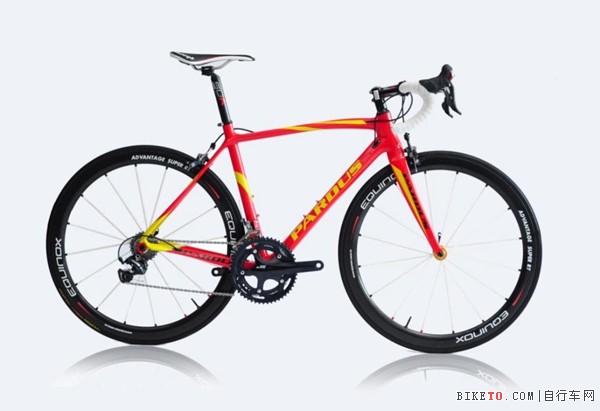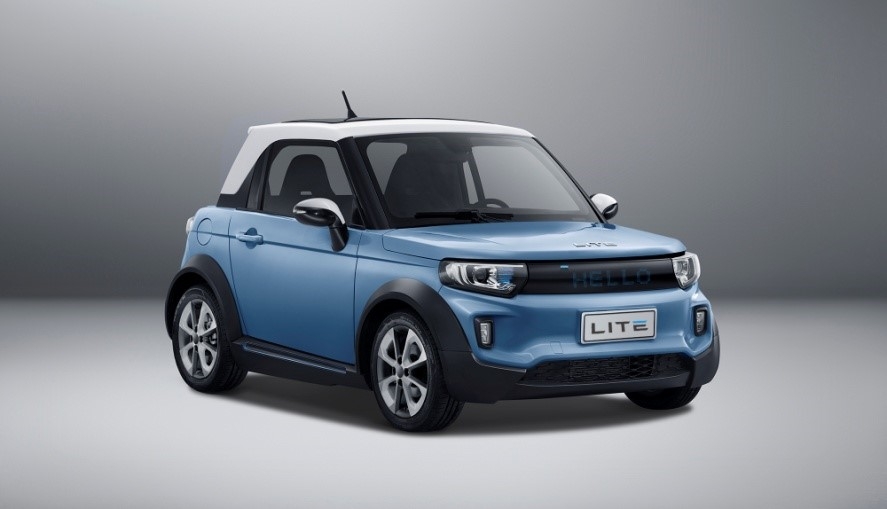In the wake of Xiaomi’s QiCycle and LeEco’s smart road bike, many Chinese factories are now developing their own carbon fibre bikes. They are stimulated by a reviving domestic bike market that fully benefits from the growing Chinese middle class and government policies.
Traditionally, China has been the world’s largest market for bicycles. In 2015, the total bicycle production in China reached 80.3 million units, with 72% of them being exported and 28% (22.8 million units) being used domestically, according to figures provided by the Asia Bike Trade Show, which takes place every year in September in Nanjing.
Previously overshadowed by the car, which was more a status symbol for the increasingly rich Chinese, the bike has come back in full force since the beginning of the 2010’s. There are many reasons for this, starting with the Chinese government’s support, which encourages sport and outdoor activities and fosters environment protection policies. The China Daily national newspaper reports that, while in Tianjin for the World Economic Forum in June 2016, the premier Li Keqiang lifted a smart bicycle made from carbon fibre and took it for a test ride at a Flying Pigeon experience store, which features 100-year-old brands. “I would like to tell Chinese bicycle companies that I support the smart upgrading of the “Made in China 2025” strategy,” he said.
Oversupply
Emblematic start-ups of the Chinese new economy have developed their own carbon fibre bikes. In June 2016, smartphone maker Xiaomi launched its QiCycle Mi electric folding bike. Sold at the very low price of 2,999 yuan (about US$ 460), the bike is made of carbon fiber and weighs 14.5 kg, with techy aspects like a Bluetooth connection that lets a smartphone app monitor ride stats and GPS navigation.
The LeEco Chinese conglomerate also recently launched two new electric “smart bikes”. The LeEco smart road bike, which won an award at the Consumer Electronic Show 2017 in Las Vegas, features an aerodynamic Toray T700 carbon fibre frame, fork, seat post, handlebar and wheels. Other components include a lightweight brake set with dual-pivot technology, paired with shift/brake levers mounted to a strong and lightweight carbon fibre handlebar. The extensive use of carbon fibre keeps the bike at just 8.4 kg. LeEco’s other model, the LeEco smart mountain bike, features a Toray T700 carbon fibre frame and handlebar, and weighs in at 12.2 kg.
These edgy bikes “are made by YongQi, an OEM factory based in Changzhou, Jiangsu province, whose owner is from Taiwan”, specifies Lucifer Chou, project manager at the Asia Bike Trade Show. They are not representative of the common carbon fibre bike offer in China, where smart and electric bikes are just a two-year-old small niche. But they are evidence that, unlike during the 20th century, bikes are now trendy and an epitome of modern China.
“Our estimated figure from China and Taiwan carbon suppliers of manufactured frames is approximatively 1.2 million, the rest of the world being at 0.4 million. Yearly carbon bike sales in China now reach approximatively 100,000 units, including 50,000 high-end bikes. There is currently an oversupply due to too many players introducing new brands and models”, states Alan Chen, marketing VP at Topkey, a major Taiwanese composite parts manufacturer that has studied carbon applications for the bicycle sector for more than ten years, focusing on sports and high-performance lightweight racing-type products.
Bicycle events and bike-sharing services
Along with large manufacturers including the Taiwanese Giant Bicycle and Merida Bike and the Chinese Battle-FSD and Solomo, there are some innovative players such as the Chinese company Ten Tech Composite based in Dongguan, Guangdong province. It announces having manufactured the lightest bike frame in the world – weighing only 635 g – to the point where it is used by cross-country bike Olympic champion Nino Schurter and cross-country bike world champion Jenny Rissveds.
The Pardus brand, owned by Taishan Sports Group, sponsors a professional cycling team and designed a carbon fibre bike to compete in national and international tours, as more and more bicycle events take place annually in China. For its part, the Chinese brand Kung, which manufactures its carbon fibre bikes in Huizhou, Guangdong province, puts forward bikes “with excellent value for money” sold at less than 10,000 yuan (US$ 1,448).
ZGL Lianyungang Shenying Carbon Bike recently introduced its top model: the SL2 bike that weighs 6.4 kg and, “contrary to other lighter bikes on the market, does not limit the weight of the rider (up to 200 kg).” For its road and mountain bikes, ZGL “uses T700 carbon fibre and beyond.”
ZGL also presented its share bike, the QBike, which has a magnesium alloy wheel with a solid tyre, a leather drive belt, an adjustable seat and a smart lock closure system. The bike also features a built-in automatic unlocking system, a solar energy powered ring tone and stand, as well as a GPS functionality that can report fixed-date information on the bike and the level of battery charging.
Bike-sharing services that allow users to find, unlock and pay to rent trackable bicycles through smartphone apps, have sprung up in China, especially the Ofo start-up and its main rival Mobike. They target younger consumers seeking to get around congested roads and public transport. The bikes do not feature carbon fibre, but again show that China is in the midst of a cycling revival that fuels a market upgrade and a sophistication of the demand.
5-10% annual growth by 2020
The unit retail price for sports bikes is growing thanks to a higher demand for high-end bicycles. According to an Asia Bike Trade Show consumer survey conducted in cooperation with the largest professional bicycle website in China, Biketo.com, the number of Chinese willing to spend between 8,000 to 15,000 yuan (US$ 1,158 to US$ 2,172) rose from 20.4% to 26.3% of total buyers between 2014 and 2015, while those willing to spend between 15,000 to 30,000 yuan (US$ 2,172 to US$ 4,343) grew from 13.4% to 17.9%. And 64% of the buyers considered weight as “important and very important” in their bicycle product purchases in 2016.
“Following clothing, food, living and mobility, there will be enormous potential for the recreation sector, especially sports-related industries. During the next two to three years, due to the growing middle class population and disposable income and to the potential cost decrease/quality improvement of China-made bicycles (zero import tax), the China sports bicycle market will remain positive”, concludes the survey.
“Carbon bikes obviously have great potential in China”, says Topkey’s Alan Chen. “My estimation from industrial experience for the next three years is a 3-5% growth per year. The 2020-2022 period could see a 5-10% growth per year.” The Asia Bike Trade Show advises that “to take advantage of this expected growth, bicycle businesses will need to understand China’s urban middle class and align pricing, product offering, sales channels, marketing communication and other practices to this target group’s specific needs.”





